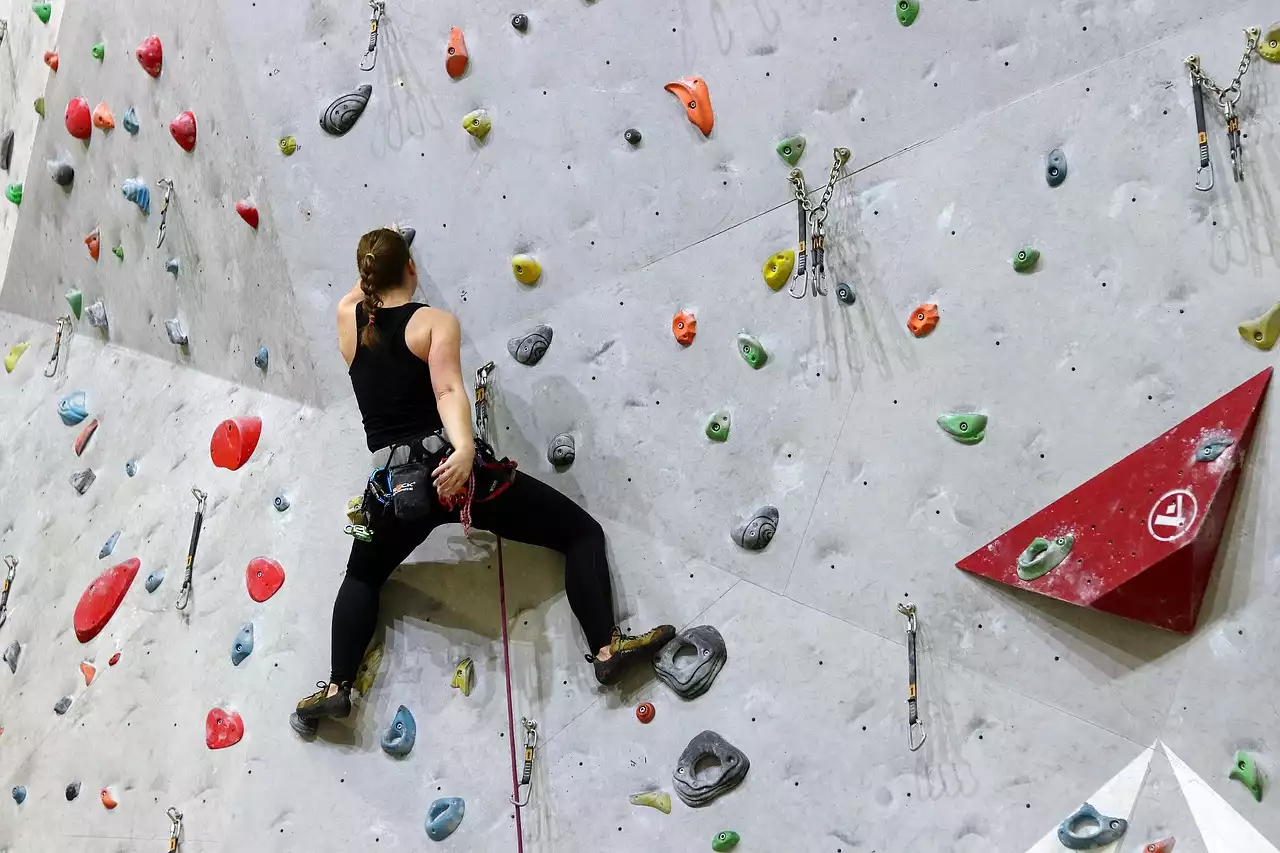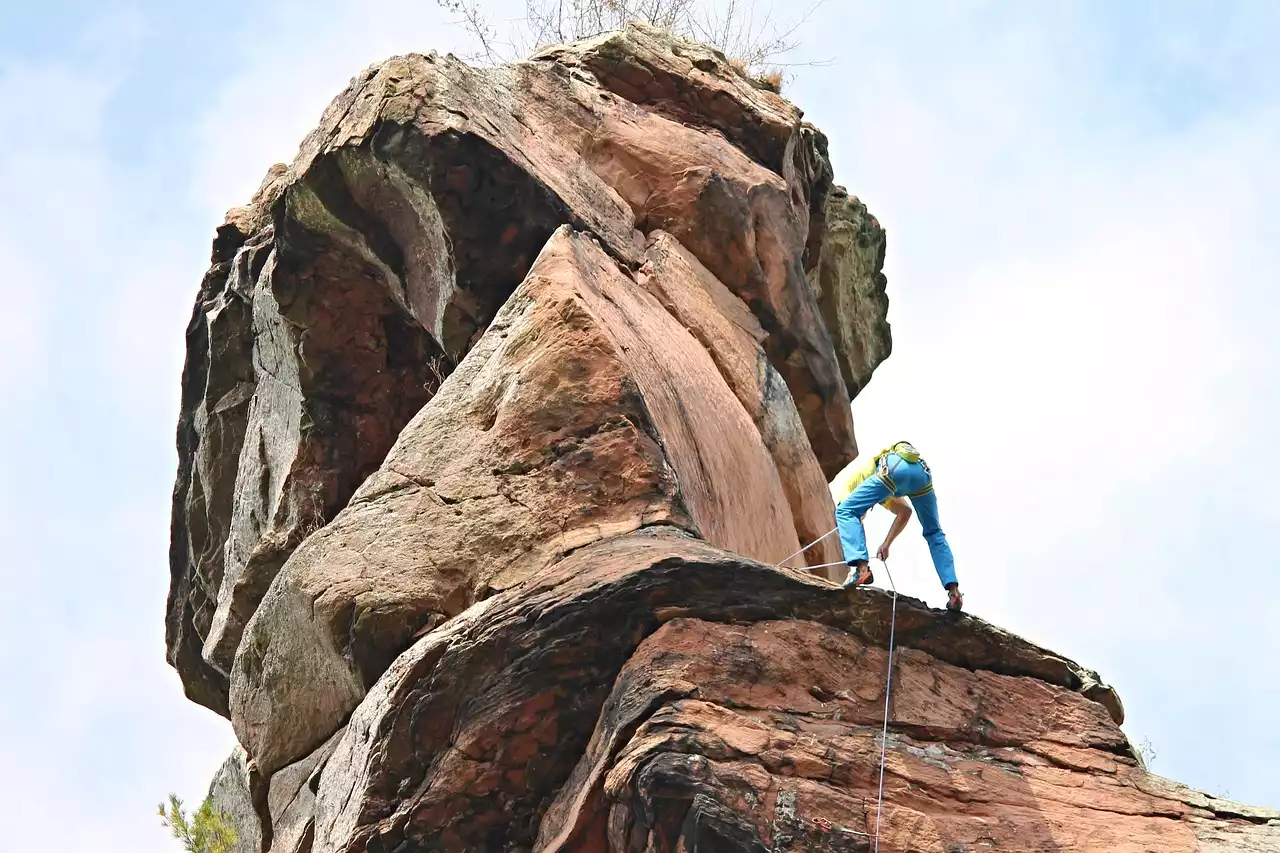Benefits of rock climbing
- Increased Aerobic Fitness: Rock climbing is an excellent way to build cardiovascular fitness. You may need to sprint to the top of a route or sprint down a route to get there safely, so climbing can increase your speed, agility, and endurance.
- Improved Balance: Rock climbing requires excellent core strength and good balance. You must be able to use your legs and arms to “swing” from one hold to the next. While you’re swinging your leg to get to hold and your arm to get back to the wall, you also have to keep your core tight and balanced. If you lose your balance, you could easily fall and seriously injure yourself.
- Increased Muscular Strength: While rock climbing involves a lot of swinging from one hold to another, it also involves swinging a climbing tool. This can be hard on your shoulders, back, and arms even if you’re a smaller person. Rock climbing can help strengthen these areas.
- Mental Health: Rock climbing is a great way to exercise your mind and build confidence. Many people who start rock climbing say they feel more confident in their skills and more focused while they’re climbing than they have in a long time.
Why learn on a climbing wall?
Rock climbing is a thrilling sport that requires a lot of strength and agility. However, climbing without the assistance of ropes, harnesses, and auto-belays can be dangerous. This is where a climbing wall comes in handy. Climbing on a wall gives you the same thrill of climbing without the risk of injury. Plus, you can take your climbing wall outside and use it as a form of outdoor fitness. When you learn to rock climb on a wall, you can safely work your climbing muscles without worrying about breaking a leg or hurting yourself badly. You can also learn the technique of climbing without any risk of falling. You can also practice moving quickly and efficiently on a wall, which is helpful for competition-level climbing. You can also practice specific climbing skills on a wall, such as footwork, foot strength, core strength, and arm strength.
Safety tips for climbing walls
- Never climb alone. This is dangerous, and you could get hurt. If you’ve never climbed before, climb with a climbing partner. There are also climbing gyms where you can climb with a group of people.
- Always wear safety gear. This includes a helmet, knee pads, wrist guards, a harness, and climbing shoes. You can buy climbing shoes and other gear at a climbing shop or online.
- Know the rules that govern your climbing wall and obey them. This includes keeping your climbing area clean and off other people’s walls.
- Never drink alcohol or take drugs before climbing. This could impair your judgment and lead to serious injury.
- Never climb above your skill level. If you’re new to climbing, don’t climb harder climbs. This could lead to serious injury.
- Never climb up a wall if you see a climber fall. Falling is dangerous, and it could lead to serious injury.
- Never climb on a rope when it’s raining. This could lead to serious injury.
Equipment needed for climbing walls
- A climbing wall. Climbing walls can be rented, bought, or borrowed from your local gym. You can also buy climbing gear and rent climbing gear online. - A chalk bag or bag for chalk. This allows you to mark your holds and keep your hands from absorbing moisture from the chalk. You can buy chalk bags or make a chalk bag from a plastic bag. - A harness and rope for climbing. You can rent a harness or buy a harness online. Make sure it fits properly and is in good condition. - Climbing shoes. Climbing shoes are different from hiking shoes or regular running shoes in that they have a wider toe box and are designed with rubber soles for grip. You can buy climbing shoes or borrow shoes from your gym or other climbers. - A climbing tool. This can be a pick, hand jam, or a carabiner. You can buy climbing tools or borrow tools from other climbers.
How to build trust with your climbing partner
When you climb with someone, you have to trust that they will keep you safe while you climb. This means spending time climbing with the same person over and over again so you can build trust with each other. It could be your climbing partner, a friend who is new to climbing, or a coach. You should also practice each climb before you climb it in real life. This way, you can make sure you’re ready before you climb on the wall. When you climb, make eye contact with your partner. This way, you can communicate with each other if you need to. You can also use hand signals to communicate.
Tips for improving your climbing wall skills
- Set goals for yourself. Decide what you want to accomplish when you start climbing on a wall. Keeping this goal in mind will help you stay focused and keep pushing yourself to get better. - Don't get discouraged when you fall. Sometimes, you'll fall and fall hard. Don't get discouraged. Get back up and try again. - Practice makes perfect. The more you climb, the better you'll get. If you don't have time to climb on a wall, find time to practice moves between other things. - Focus on staying safe. This means staying focused on the task at hand and keeping your focus on the task at hand.
Climbing wall etiquette
- Never talk trash about other climbers or the wall. If someone talks trash about you, ignore them or calmly ask them to stop. - Never feed a climber’s ego. If a climber points out how good they are, politely ask them to stop. - Don't ask a climber to spot you. This is a dangerous move, and you could get hurt. - Don't take shortcuts. This means climbing up a route without using all the holds or climbing down a route without using the rope. - Clean up after yourself. This means cleaning up after yourself when you’re done climbing and cleaning the wall when you’re done climbing. - Don't block the rope. This means not tying up the rope when someone is climbing.



.png?size=50)



